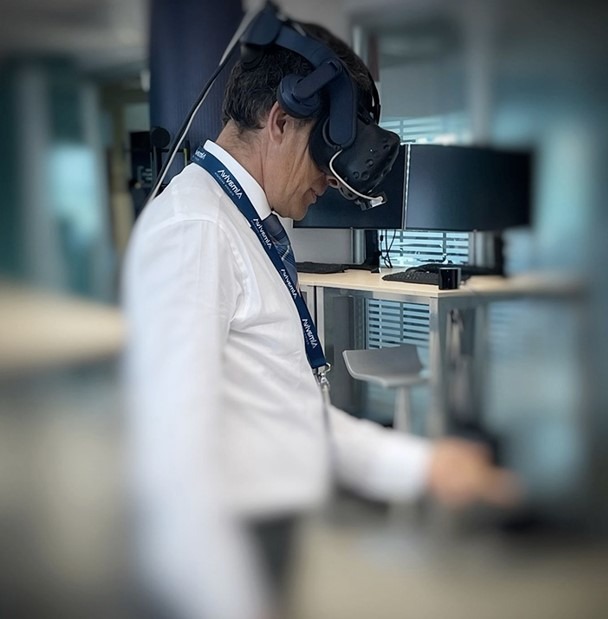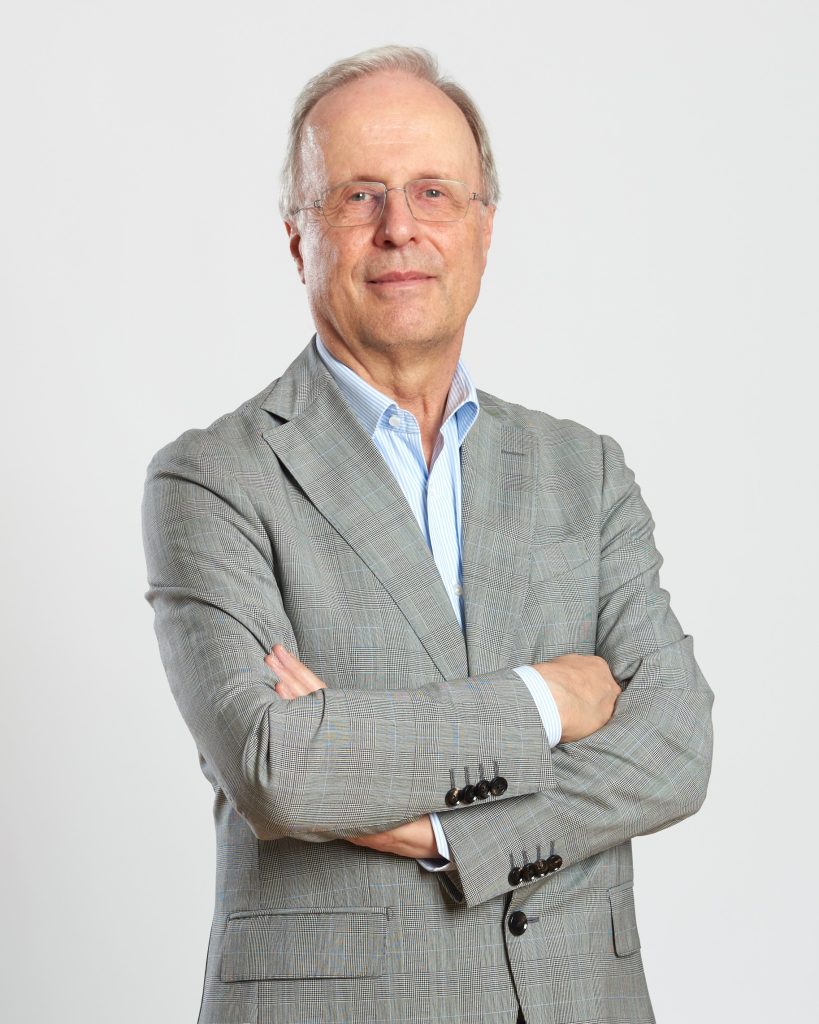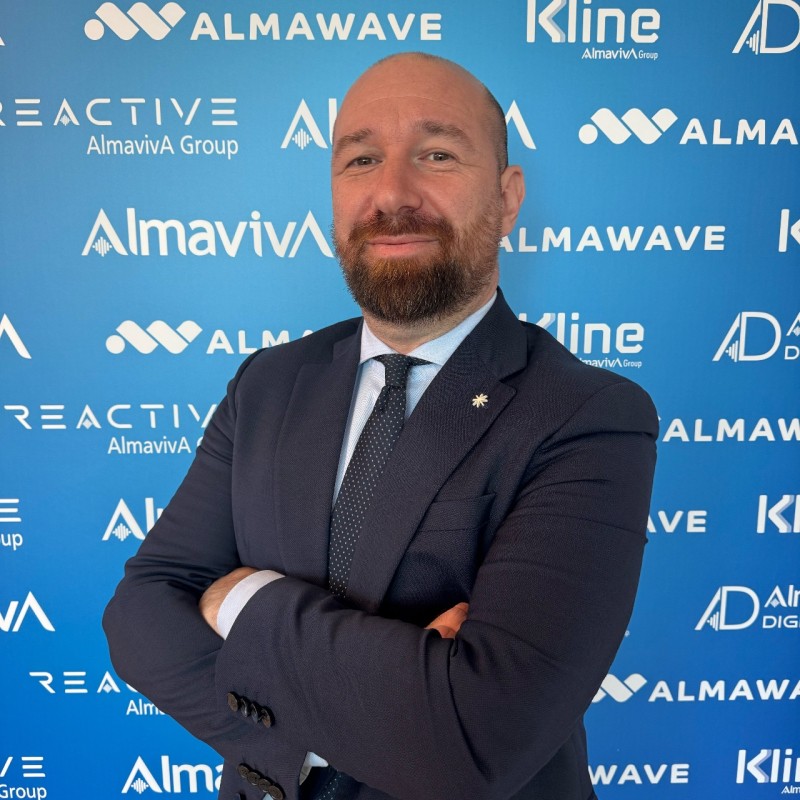At the Villa Beretta Rehabilitation Centre in Costa Masnaga, part of the Valduce Hospital network, stroke survivors are now recovering with the help of digital twins, virtual reality, and artificial intelligence.
The initiative is the result of a partnership with Almaviva, the Rome-headquartered digital innovation group, and aims to bring rehabilitation beyond the walls of the hospital and into patients’ homes.
The partnership has developed a telerehabilitation platform that uses modern technologies to extend high-quality rehabilitation from the clinic into the home, while personalising therapy and making treatment more scalable and cost-effective.
“This collaboration with Almaviva is the culmination of a long period of clinical research in the field of telerehabilitation,” says Franco Molteni, scientific director of the Villa Beretta Rehabilitation Research Innovation Institute and the clinical director of the Villa Beretta Rehabilitation Centre.
“New technologies allow for more effective rehabilitative treatments, particularly because they can be carried out at home for extended periods. Immersive reality and personalised treatment are the foundation for restoring human functioning, enhancing patients’ quality of life.”
Digital twin
The system centres around a software suite that allows healthcare professionals to monitor patients both onsite and remotely.
Built with a modular architecture, the platform includes three components: a clinical dashboard for planning and managing therapy, a patient-facing mobile app with therapy schedules, progress tracking and educational materials, and a virtual reality interface offering a library of personalised exercises, including motor and cognitive rehabilitation tasks.
Using real-time sensors, a dynamic, data-driven digital replica of the patient – or digital twin – evolves in parallel with their therapy. It incorporates real-time data, cognitive performance, motor function, and vital signs, offering clinicians a holistic view of progress over time.

VR headset
“The key to developing a solution like this is continuity of care,” says Molteni. “We use wearable sensors that patients can use during daily life to detect mobility and lifestyle patterns. The platform collects and manages these data points across the day, giving us the ability to define each patient’s global functional profile.”
“From there, we can tailor treatment using technologies like virtual reality and gamification, which target both motor and cognitive functions simultaneously.”
For clinicians, this means going from static, episodic rehabilitation to an ongoing, responsive approach that adapts to each individual’s needs, he says.
Eye-tracking, for example, is used to assess a patient’s ability to focus and engage with specific tasks, while hand-tracking and movement sensors provide insights into physical control and coordination.
“This combination allows us to bridge the gap between structured therapy and real-life conditions,” says Molteni.
Extending rehab
The solution leverages AI to process complex and disparate data streams, which can surface patterns and correlations that would otherwise go unnoticed, informing both clinical decision-making and long-term strategy. “Without AI, we wouldn’t be able to build the full picture,” says Molteni.
“Technology gives us the ability to detect human functioning, and also to design exercises that improve it.”
A key objective of the project is to ensure that rehabilitation does not end when a patient leaves the hospital.
With remote sessions and continuous monitoring, the platform supports more frequent engagement without the need for travel or prolonged hospital stays, a benefit particularly relevant to stroke survivors and patients with mobility issues.
The first trial phase is targeting young individuals recovering from stroke, a demographic that often needs long-term rehabilitation but faces barriers to access. Early results from Villa Beretta’s pilot studies, which have also included patients with Parkinson’s disease, multiple sclerosis, and early-stage cognitive decline, are encouraging.
“We’ve published a great deal of research over the past decade showing that this approach works,” says Molteni. “Virtual reality, digital therapy, speech rehabilitation, cognitive exercises. It’s all possible, and effective.”
The challenge now is scaling these successes beyond research. “We have a lot of evidence,” says Molteni.

Dr Franco Molteni, Villa Beretta
“The real challenge is encouraging healthcare systems to support this new way, economically and logistically.”
“The issue is not whether it works, but whether we’re ready to make the change. We’re in the digital revolution, it’s time to act on it.”
Cultural readiness is just as important. While many patients today are comfortable with technology, using video calls or streaming services, the clinical world still requires structured pathways to introduce new systems.
Looking ahead
Molteni believes the time is ripe: “The digital revolution in healthcare isn’t a future concept. It’s here. Now we need to integrate it into real life.”

Stefano Palladino, head of digital healthcare, Almaviva
Adding to this, Stefano Palladino, head of digital healthcare for the public sector at Almaviva said: “This platform is more than a therapy tool, it’s designed to improve efficiency, scalability, and clinical personalisation across healthcare.”
Looking ahead, the partnership between Almaviva and Villa Beretta aims to expand the platform further.
Plans include enlarging the library of rehabilitation exercises, increasing the number of clinical tests that can be conducted remotely, and integrating multiple types of sensors to track attention, behaviour, and motor activity, all in real time.